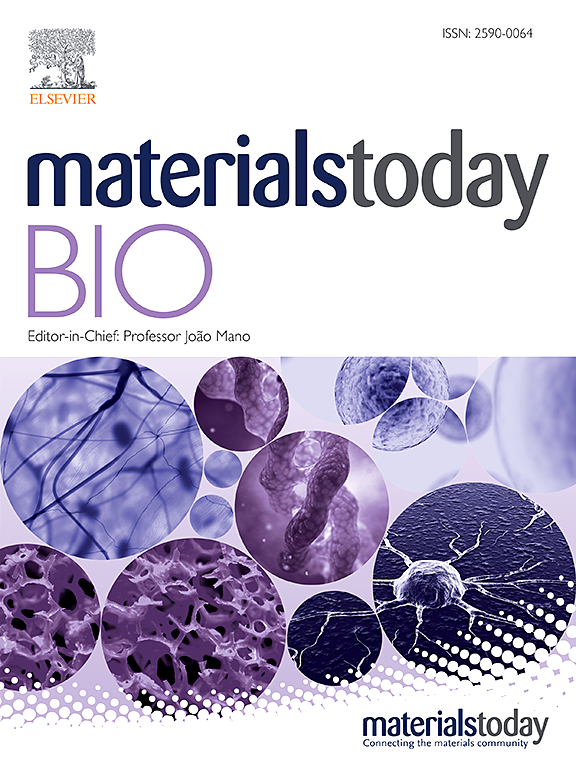用 ANGPT2 特异性肽修饰的多柔比星 PEG 化脂质体用于胶质瘤靶向成像和治疗。
IF 8.7
1区 医学
Q1 ENGINEERING, BIOMEDICAL
引用次数: 0
摘要
本文章由计算机程序翻译,如有差异,请以英文原文为准。

Doxorubicin-loaded PEGylated liposome modified with ANGPT2-specific peptide for integrative glioma-targeted imaging and therapy
Liposomal nanocarriers are able to carry peptides for efficient and selective delivery of radioactive tracer and drugs into the tumors. Angiopoietin 2 (ANGPT2) is an excellent biomarker for precise diagnosis and therapy of glioma. The present study aimed to design ANGPT2-specific peptides to modify the surface of nanoliposomes containing doxorubicin (Dox) for integrative imaging and targeting therapy of glioma. The targeted ANGPT2 peptides were designed using the molecular operating environment. Peptide-conjugated PEGlated liposomes containing Dox (peptide-Lipo@Dox) were prepared for radionuclide and drug delivery. Glioma cell functions were determined based on cell cycle and viability, apoptosis, cell invasion and migration, and colony-formation assays. The anti-tumor effect of peptide-Lipo@Dox was validated in intracranial U87-MG cell glioma-bearing mice in vivo. The peptides GSFIHSVPRH (GSF) and HSVPRHEV (HSV) showed specific affinity for ANGPT2 and a better cellular uptake in U87-MG cells. Micro-positron emission tomography (PET)/computed tomography (CT) imaging was used to visualize the orthotopic transplantation of glioma in the brain 1 h after injection of radionuclide 68Ga-labeled peptide-Lipo@Dox. Lipo@Dox with peptide modification demonstrated stable Dox loading, small sizes (<40 nm), and enrichment in the tumor region of the mouse brain. Peptide-Lipo@Dox treatment inhibited the Tie-2/Akt/Foxo-1 pathway, thereby inhibiting cell invasion and migration, cell viability, and colony-forming ability of U87-MG cells. Lipo@Dox peptide modification showed a better suppression of glioma development than Lipo@Dox. Thus, the ANGPT2-specific peptides were successfully designed, and the PEGylated liposome modified with ANGPT2-specific peptide served as part of a potent delivery method for integrative glioma-targeted imaging and therapy.
求助全文
通过发布文献求助,成功后即可免费获取论文全文。
去求助
来源期刊

Materials Today Bio
Multiple-
CiteScore
8.30
自引率
4.90%
发文量
303
审稿时长
30 days
期刊介绍:
Materials Today Bio is a multidisciplinary journal that specializes in the intersection between biology and materials science, chemistry, physics, engineering, and medicine. It covers various aspects such as the design and assembly of new structures, their interaction with biological systems, functionalization, bioimaging, therapies, and diagnostics in healthcare. The journal aims to showcase the most significant advancements and discoveries in this field. As part of the Materials Today family, Materials Today Bio provides rigorous peer review, quick decision-making, and high visibility for authors. It is indexed in Scopus, PubMed Central, Emerging Sources, Citation Index (ESCI), and Directory of Open Access Journals (DOAJ).
 求助内容:
求助内容: 应助结果提醒方式:
应助结果提醒方式:


